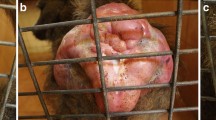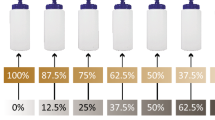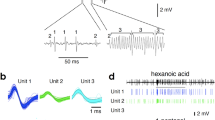Abstract
IT has long been known that animals use their olfactory senses to communicate information, including sexual status, individual identification and maternal attraction1–3. Olfactory communication has been demonstrated throughout the Mammalia, including the primates4,5, and there has been speculation as to whether or not it exists in some form in man6,7. Substances are know to exist on man that serve an olfactory function in other animals8 and there are many apocrine and sebaceous glands on the human body that produce such secretions. We have done two experiments, the first to determine whether adults can identify an individual and determine his or her sex by the odour of an article of clothing, and the second to examine whether an infant can identify its mother's odour by a behavioural response.
This is a preview of subscription content, access via your institution
Access options
Subscribe to this journal
Receive 51 print issues and online access
$199.00 per year
only $3.90 per issue
Buy this article
- Purchase on Springer Link
- Instant access to full article PDF
Prices may be subject to local taxes which are calculated during checkout
Similar content being viewed by others
References
Cheal, M. L., and Sprott, R. L., Psychol. Rep., 29, 195–243 (1971).
Cowley, J. J., and Wise, D. R., in Chemical Influences on Behaviour (edit. by Porter, R., and Birch, J.), 144–166 (Churchill, London, 1970).
Birch, M. C., Pheromones (North-Holland, Amsterdam, 1974).
Michael, R. P., and Keverne, E. B., Nature, 218, 746–749 (1968).
Epple, G., Int. Zoo Yb., 12, 36–42 (1971).
McClintock, J. K., Nature, 299. 244–245 (1971).
Comfort, A., Nature, 230, 432–433 (1971).
Michael, R. P., Bonsall, R. W., and Warner, P., Science, 186, 1217–1219 (1974).
Pratt, K. C., Nelson, A. K., and Sun, K. S., The Behavior of the Newborn Infant 125, (Ohio State University Press, Columbus, Ohio, 1930).
Darwin, C., Mind, 7, 282–289 (1877).
Macfarlane, A., in The Human Neonate in Parent-Infant Interaction, 103–117 (Ciba Found. Symp. 33, Amsterdam, 1975).
Kaplan, J., and Russell, M., Devl Psychobiol., 7, 15–19 (1973).
Author information
Authors and Affiliations
Rights and permissions
About this article
Cite this article
RUSSELL, M. Human olfactory communication. Nature 260, 520–522 (1976). https://doi.org/10.1038/260520a0
Received:
Accepted:
Issue Date:
DOI: https://doi.org/10.1038/260520a0
This article is cited by
-
Dynamic influences on the neural encoding of social valence
Nature Reviews Neuroscience (2022)
-
The scent of attraction and the smell of success: crossmodal influences on person perception
Cognitive Research: Principles and Implications (2021)
-
On the relationship between olfactory sensitivity and personality in HIV-seropositive and healthy men
Current Psychology (2020)
Comments
By submitting a comment you agree to abide by our Terms and Community Guidelines. If you find something abusive or that does not comply with our terms or guidelines please flag it as inappropriate.



